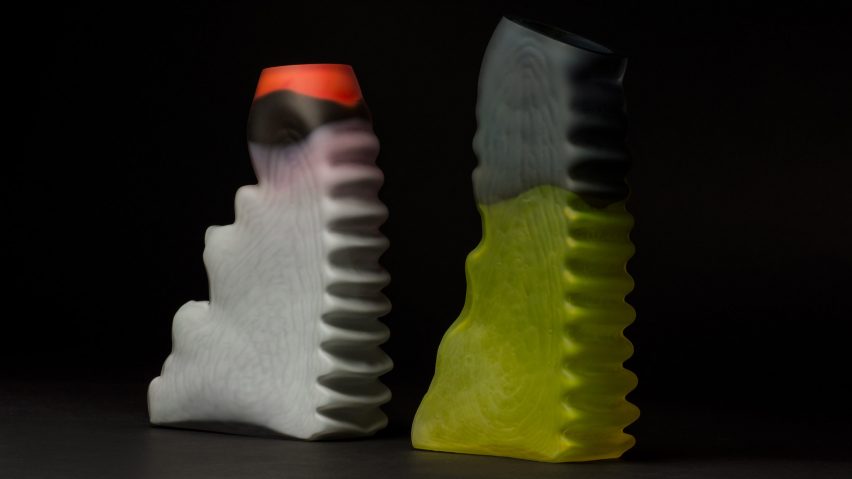
Jonatan Nilsson designs unique glassblowing contraption to make amorphous vases
Swedish designer Jonatan Nilsson built his own machine from sheet metal and wooden blocks to create this Shifting Shape collection of glass vases, which feature jagged edges and rippled surfaces.
After failing to find a flexible-enough mould for glassblowing, Nilsson put together his own machine to create each vase in the Shifting Shape collection.
The Stockholm-based designer used a band saw to cut shapes into wooden blocks, before stacking them up in different formations in two piles and securing them to the sheet metal structure on either side.
Different pieces of wood can be fastened to the metal sheets to offer varied results, as the wooden shapes give the vases their finished form.
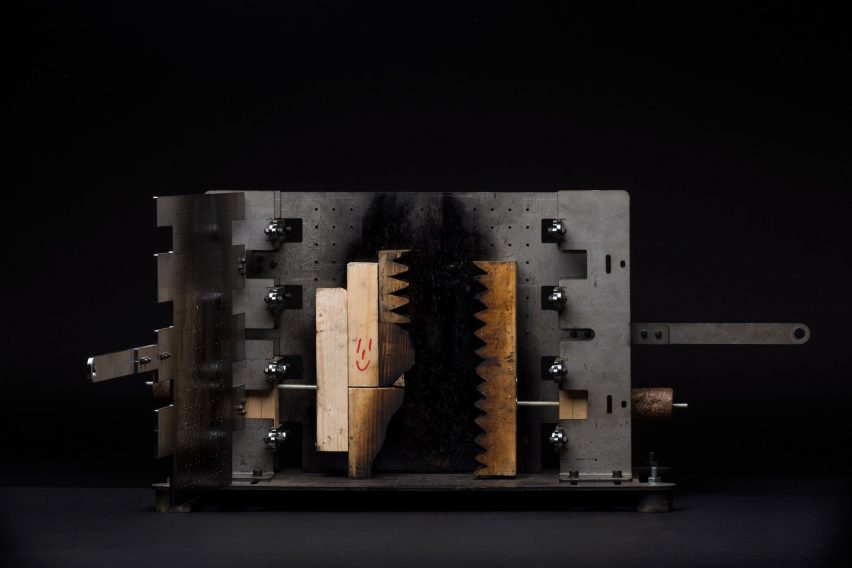
The machine's doors move on hinges, allowing the user to slide the wooden shapes back and forth. Once the doors are closed, the wooden blocks are pushed together, but a hollow space is left in-between each stack.
It is this gap that the hot mass of glass is inserted into and blown. The designer worked with an experienced glass-blower to create the final products.
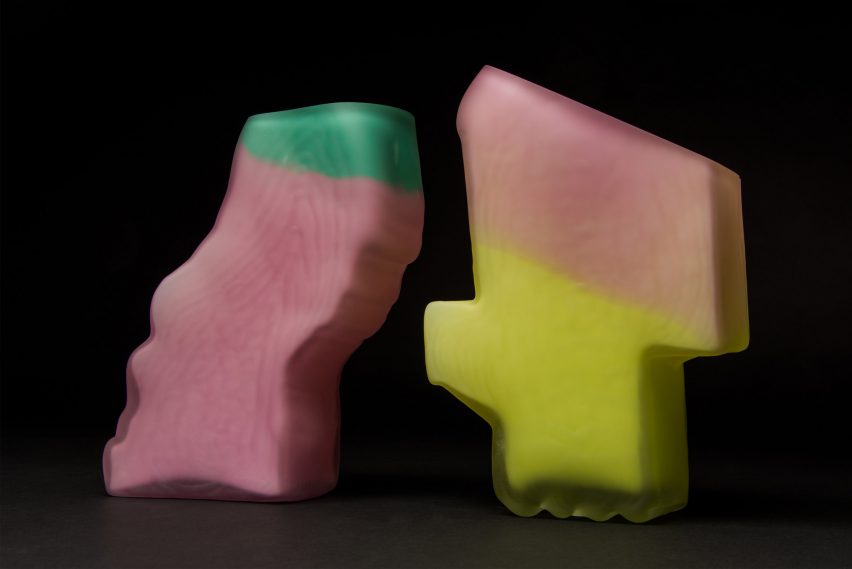
Some boast jagged, serrated edges while others have stepped or wave-shaped sides. The front and back of each vessel is flat, and features a soft rippled texture that, coincidentally, looks like the imprint of natural wood grain.
This effect, however, is the result of the glass being blown against a cold, metal surface, the designer explains.
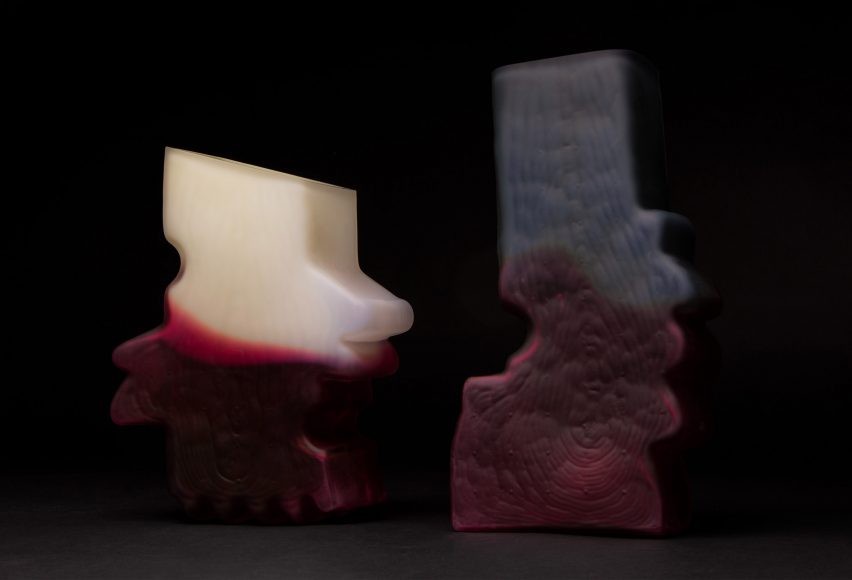
"Traditionally, a wooden mould for blowing glass in can be used over a hundred times and always result in the same shape," explained Nilsson. "I wanted to come up with a process where the shape could be altered in a quick way, and in the end came up with this machine."
"I like the distinct shapes that you can get with mould-blown glass, and wanted to create a method where you don't have to go through the time-consuming and expensive process of making a completely new mould in order to obtain a new shape," he added.
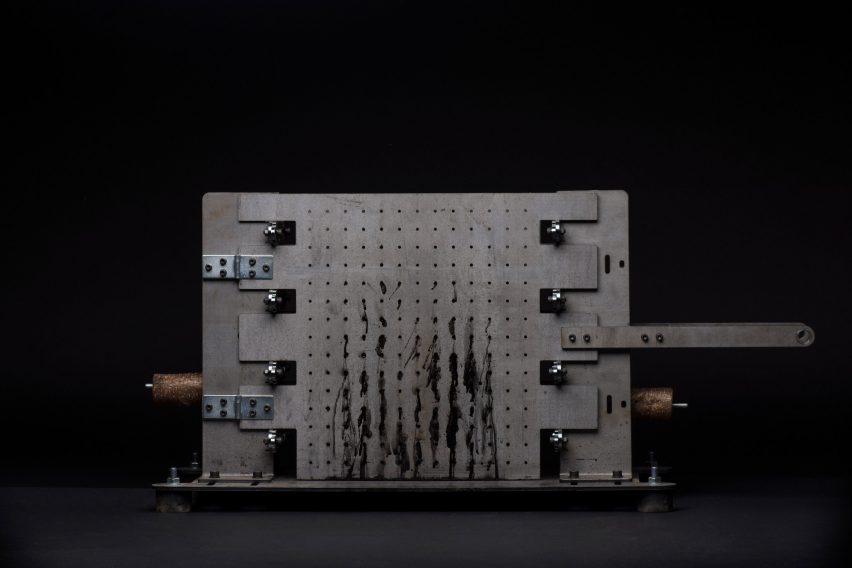
Nilsson also wanted to use the project to exhibit the ways in which a manufacturing process can affect the results of made objects.
"It's quite hard to tell exactly how the finished vase will turn out just by looking at the silhouette created between two wooden shapes," said the designer.
"I like the fact that there is a bit of a built-in chance factor in the process, since it gives way to unpredicted shapes in the finished glass," he continued.
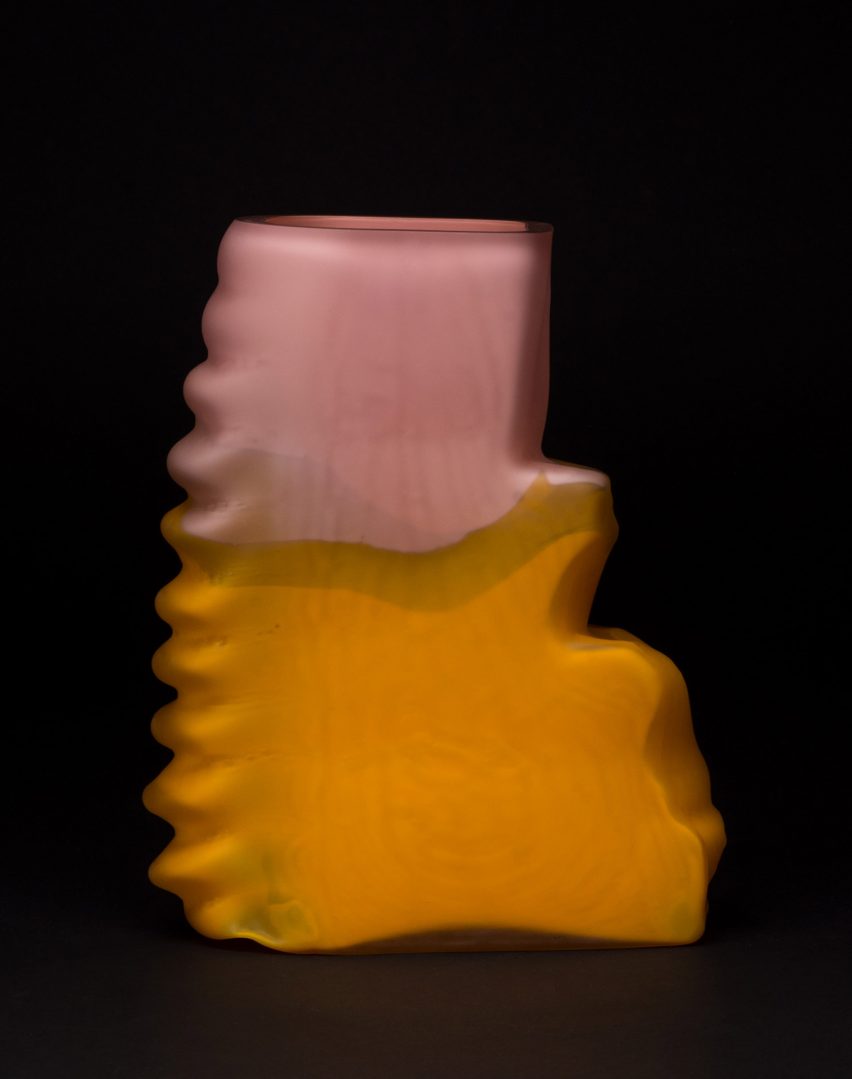
The vases are given their bright hues from coloured rods of glass that are heated in a separate oven before being attached to the clear glass in the blowing process.
Just as the shapes of each vase are irregular and unique, so are the colour combinations, with some pairing deep purples with bright yellows and others having a more subtle blend of hues from oranges to pinks.
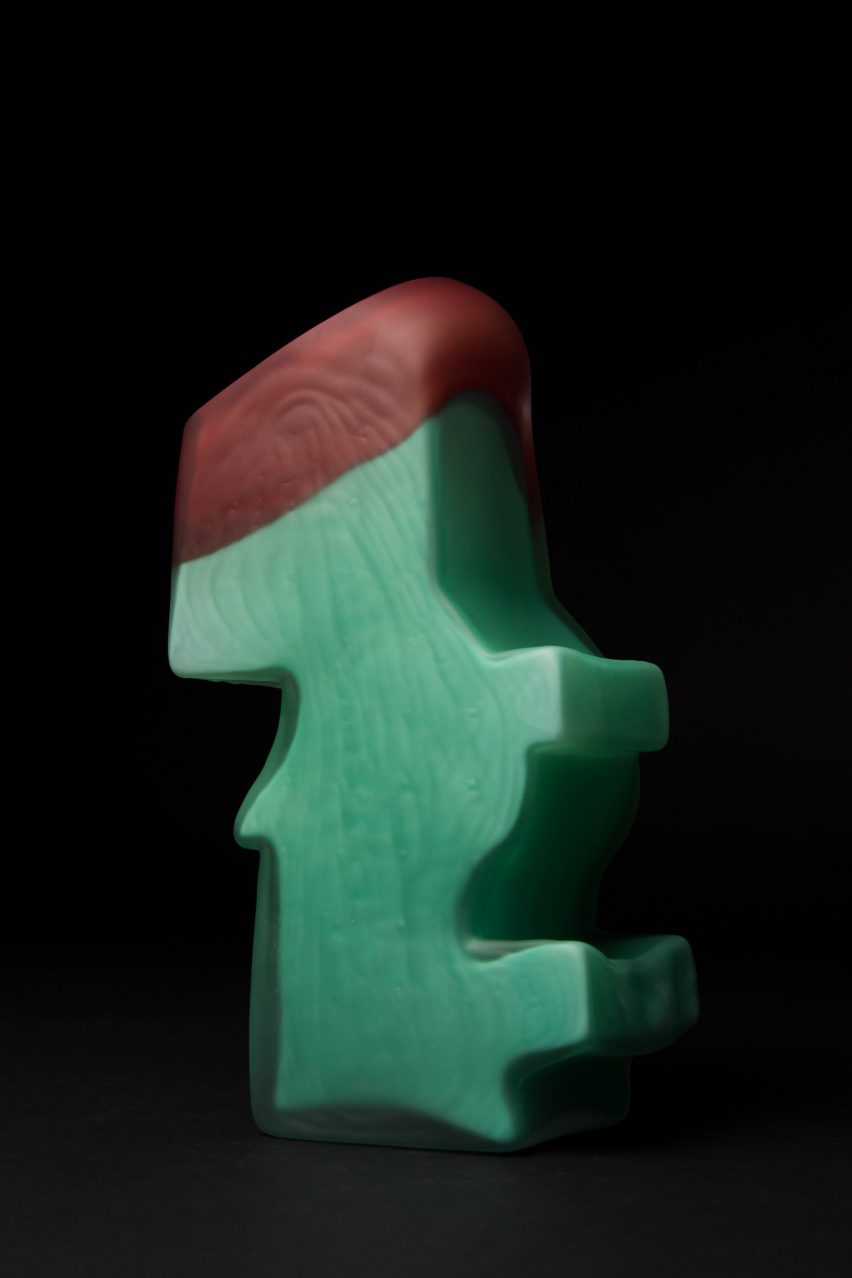
Nilsson made the collection, which includes around 20 different pieces, during a two-week-long artist-in-residence session at The Glass Factory in Småland, Sweden. Each vessel measures between 25 and 40 centimetres high.
Eindhoven-based Studio Joachim-Morineau also built its own industrial machine that replicates human error to make unique ceramics.
The device drips liquid porcelain at a certain rhythm to create cups and bowls with different forms and patterns. It aims to combine the precision of technology with "glitches" to make objects that are similar but not identical.
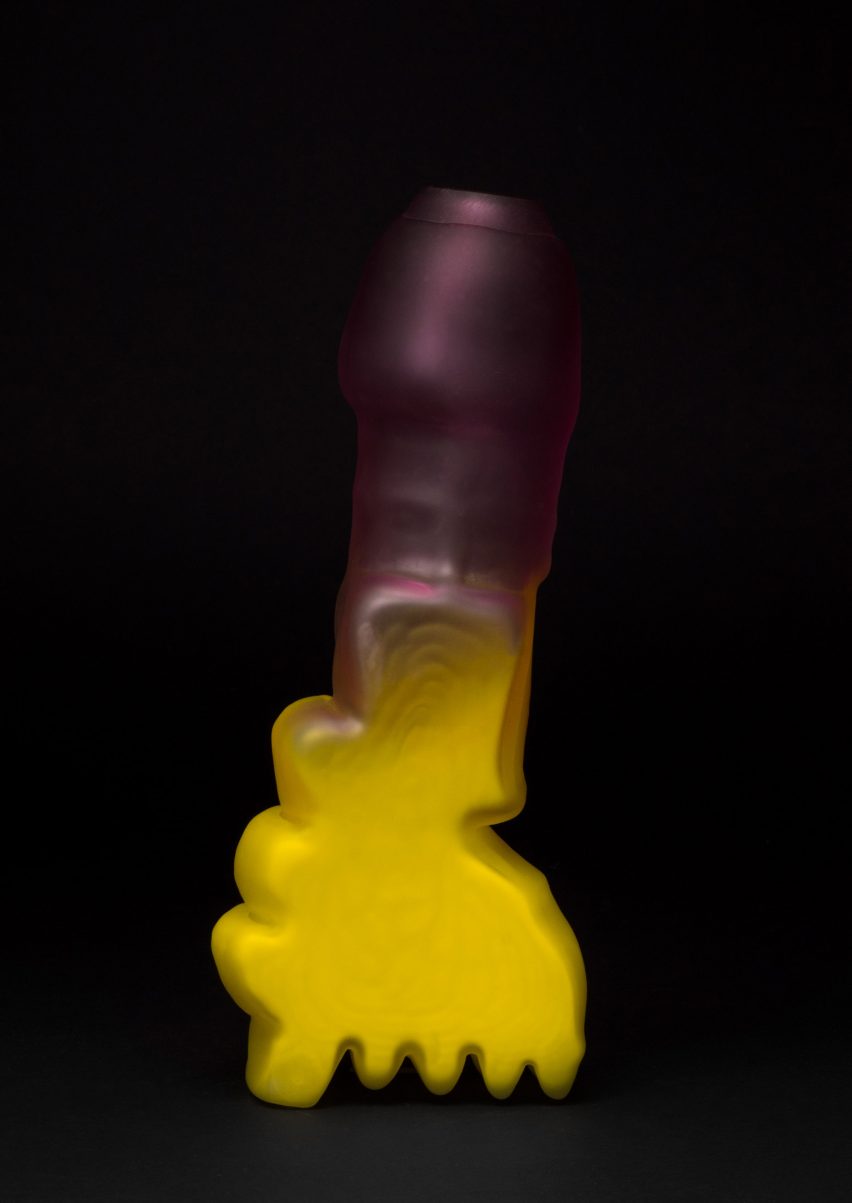
Photography is by Tor Westerlund.